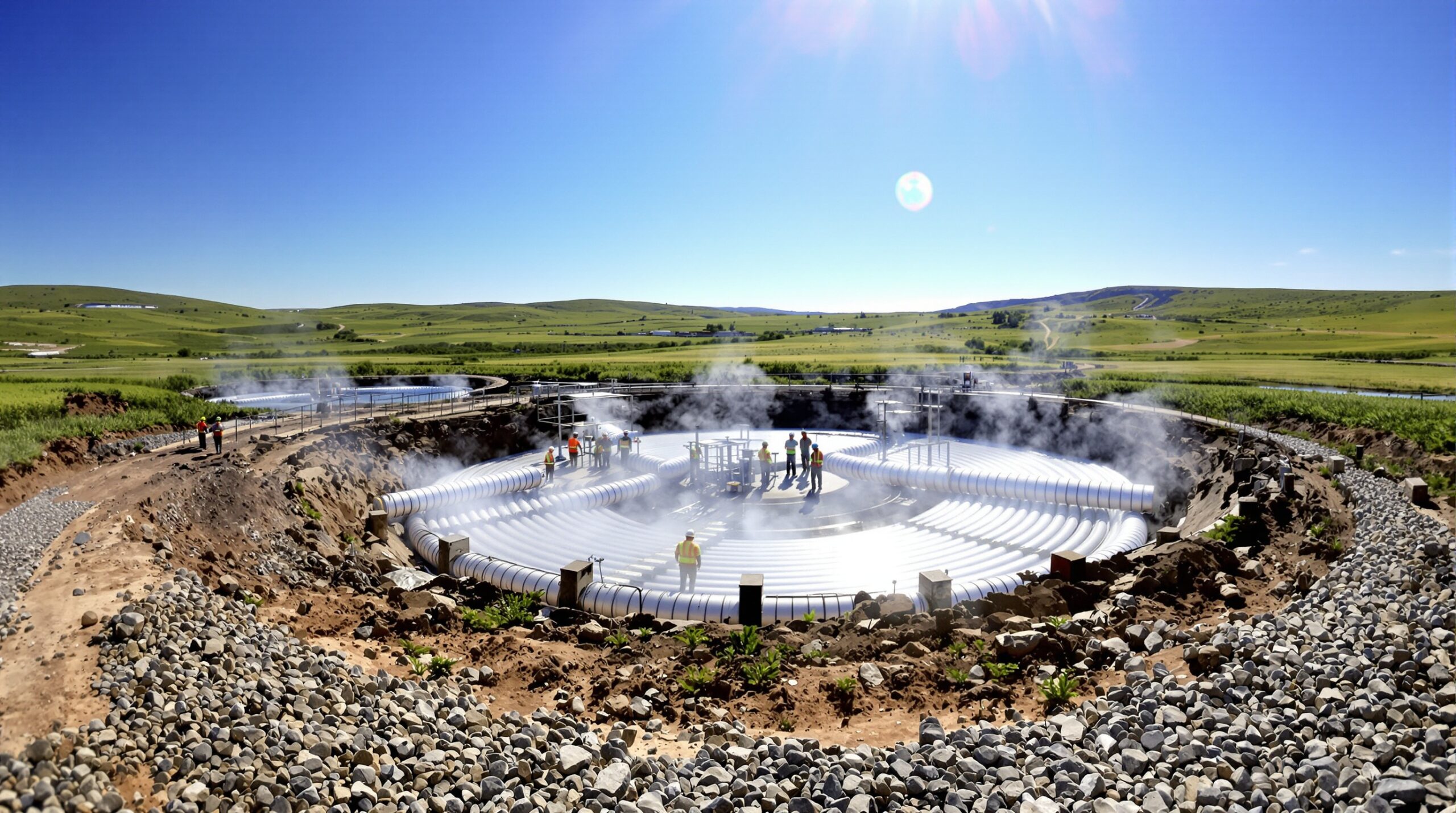Old oil wells once symbolized environmental concerns and a fading industry. Today, they represent opportunity and innovation. A groundbreaking geothermal project is giving a second life to these abandoned wells by converting them into sources of clean, renewable energy. This initiative aligns environmental stewardship with economic revitalization, setting an example for sustainable infrastructure worldwide.
The Problem of Abandoned Oil Wells
Millions of oil and gas wells have been abandoned globally. Many emit methane, a potent greenhouse gas that contributes to climate change. Remediation costs burden local governments, and unused wells can leak pollutants into groundwater. Communities near these sites often experience health and safety risks. Addressing the abandoned well crisis requires innovative solutions.
Typically, decommissioning a well means sealing it and attempting to restore the site. This process is expensive and energy-intensive. In the United States alone, cleanup costs for abandoned wells could reach tens of billions of dollars. Therefore, finding new uses for these infrastructure relics is both a practical and eco-friendly approach.
Geothermal Energy: An Untapped Resource
Geothermal energy captures heat from the earth and converts it into power or heating. It remains one of the cleanest energy sources available. Despite its low emissions, geothermal power contributes only a small share of global energy production. Expanding geothermal capacity has traditionally faced high drilling costs and site limitations.
Using existing oil wells for geothermal energy offers a solution to both challenges. Re-using the wells eliminates the need for expensive new drilling. Furthermore, wells already burrow deep underground, reaching hot rock formations suitable for energy extraction. This marriage of old and new technology provides a win-win for energy and the environment.
How the Transformation Process Works
Engineers retrofit unused oil wells to harness geothermal heat. The process begins by assessing the well’s structure and geology. Next, they install special piping systems designed for geothermal energy extraction. These circulate fluids deep underground, absorbing heat from the Earth’s core.
This heated fluid rises back to the surface, where it powers turbines or generates direct heating. With minimal modifications, these systems can operate with high efficiency. The technology adapts to various well conditions, making it versatile and scalable. The conversion process costs less than drilling a new geothermal borehole.
Pilot Projects and Early Results
Several pilot projects worldwide are already turning theory into practice. In Canada, a company called Eavor has developed a closed-loop geothermal system using repurposed oil wells. Their demonstration facility in Alberta supplies clean energy to the local grid, showcasing practical viability. Similar projects are underway in Texas, where thousands of abandoned wells dot the landscape.
In Europe, research consortia are conducting tests in the North Sea oil fields. These collaborations involve governments, energy firms, and academic institutions. Early data reveal promising levels of power output. Local communities see the benefits through job creation, property value stabilization, and reduced ecological risk.
Environmental and Economic Benefits
Turning abandoned oil wells into geothermal plants offers substantial environmental benefits. The process reduces methane leakage, directly cutting greenhouse gas emissions. Groundwater remains protected, preventing contamination from decaying infrastructure. By generating renewable energy, the need for fossil fuel-burning power plants diminishes further, easing carbon footprints worldwide.
Economically, these projects create new opportunities. Local workers find employment in well retrofitting and power plant operations. Rural municipalities gain tax revenue from reactivated industrial sites. Electricity prices stabilize or decline due to the presence of low-cost, reliable geothermal energy. This model can drive economic growth in regions previously dependent on fossil fuels.
Challenges and Considerations
Despite the promise, some challenges remain. Not every abandoned well is suitable for geothermal conversion. Well integrity must be verified, and some may require significant repair. Differences in geology can affect heat extraction efficiency. Upfront investment, while lower than deep drilling, can still present a barrier for smaller projects.
Regulatory frameworks also need updating. Many regions lack clear policies allowing geothermal repurposing of oil wells. Developers must navigate environmental permits, land rights, and energy market rules. Ongoing government support will be essential to streamline processes and provide incentives. Addressing these concerns can accelerate wide-scale adoption.
The Global Potential for Clean Power
Experts estimate that millions of abandoned wells worldwide could be candidates for geothermal conversion. The International Energy Agency places global geothermal potential at several hundred gigawatts. If only a fraction of these sites become active, it could transform the renewable energy sector.
Countries with significant oil production history, including the United States, Russia, and China, stand to benefit the most. Even nations with smaller oil sectors can apply this technology to reduce emissions and boost energy independence. Developing countries may find new value in aged wells, bringing vital electricity to remote areas.
Next Steps and Future Outlook
Scaling geothermal conversions of oil wells requires collaboration among governments, energy firms, and communities. Investment in research and pilot programs can improve technology and reduce conversion costs. Knowledge-sharing between regions will drive efficiency and uncover best practices. International partnerships can support countries with limited technical expertise.
Policy changes, such as tax incentives and emissions credits, could attract further private investment. Streamlining regulatory procedures will also spur faster adoption. Public awareness campaigns can highlight the benefits of geothermal, encouraging support for clean energy initiatives.
Conclusion
The conversion of abandoned oil wells into geothermal power stations represents a significant step for clean energy and environmental restoration. These projects reclaim industrial relics, turning environmental hazards into sources of sustainable prosperity. By blending innovation with resourcefulness, communities are crafting an energy future grounded in hope and ingenuity. The geothermal transformation of old oil wells marks the beginning of a new era in the world’s clean energy journey.

